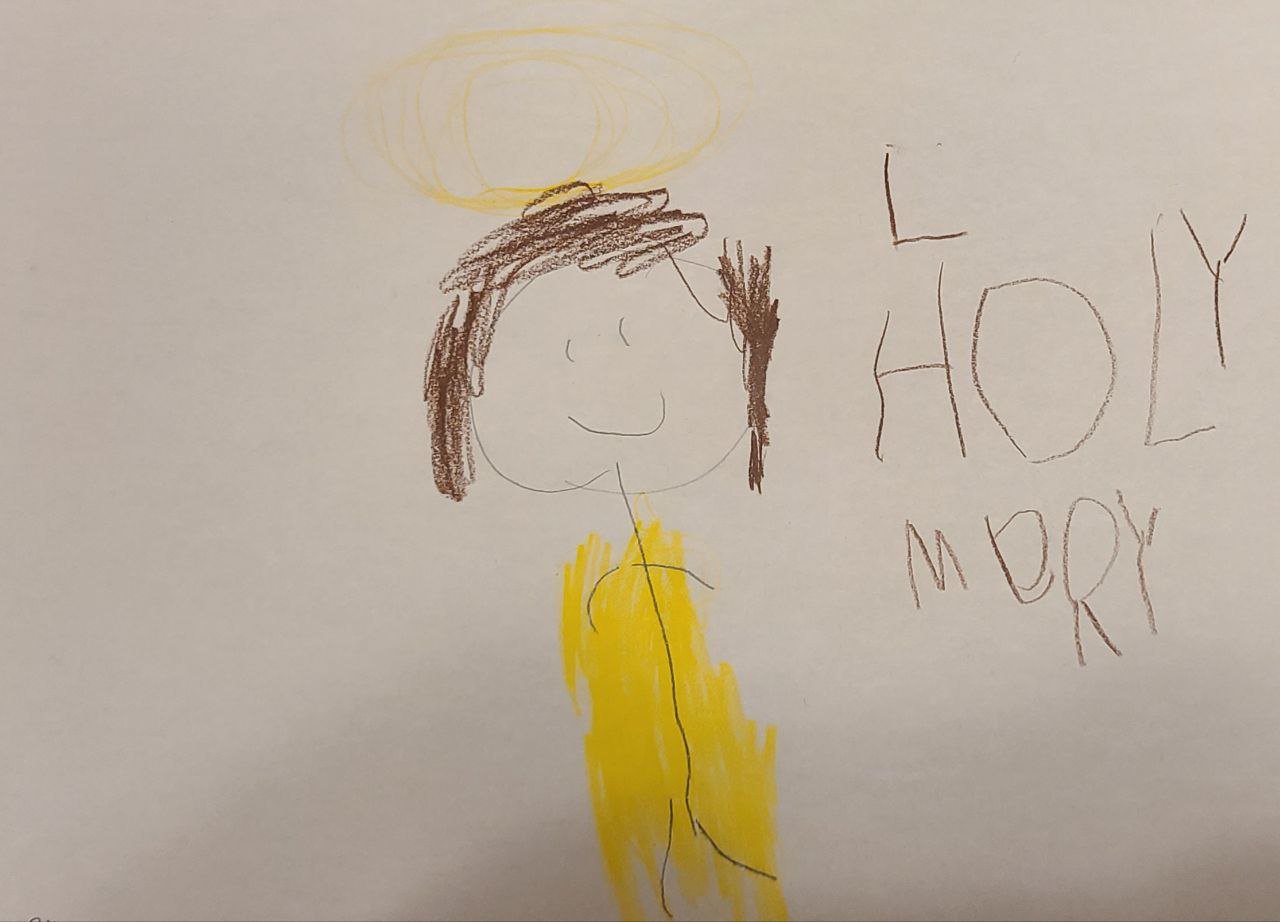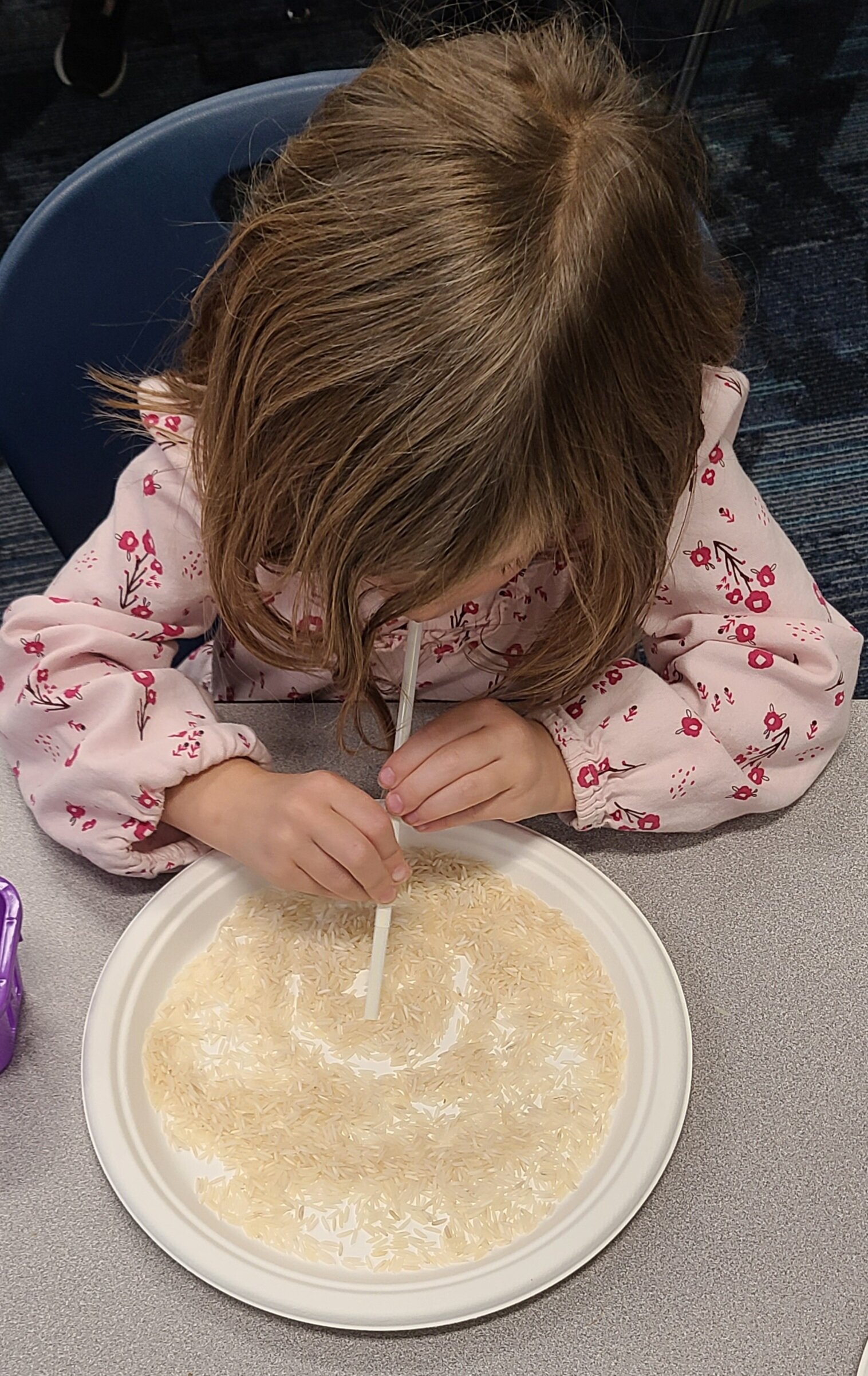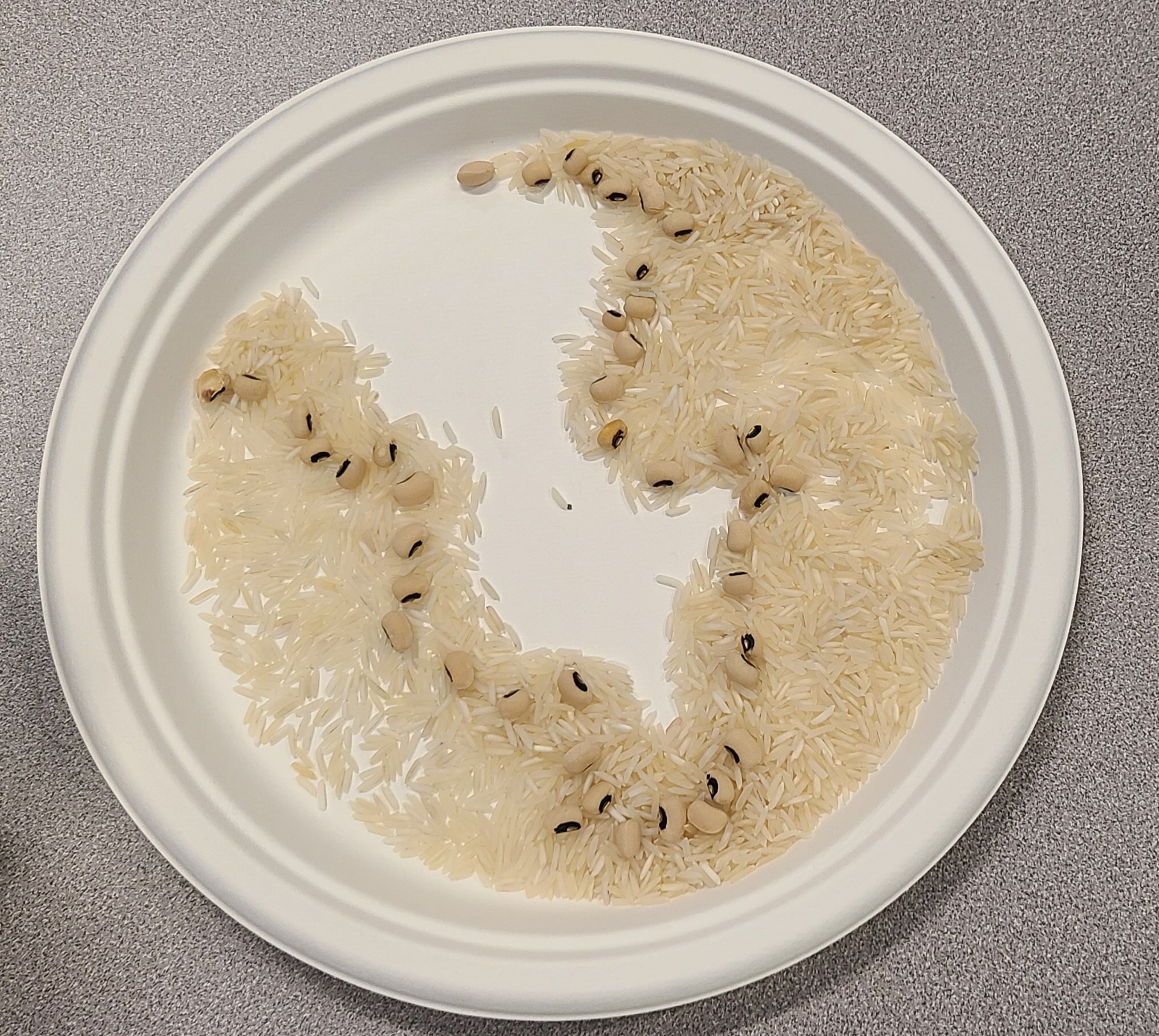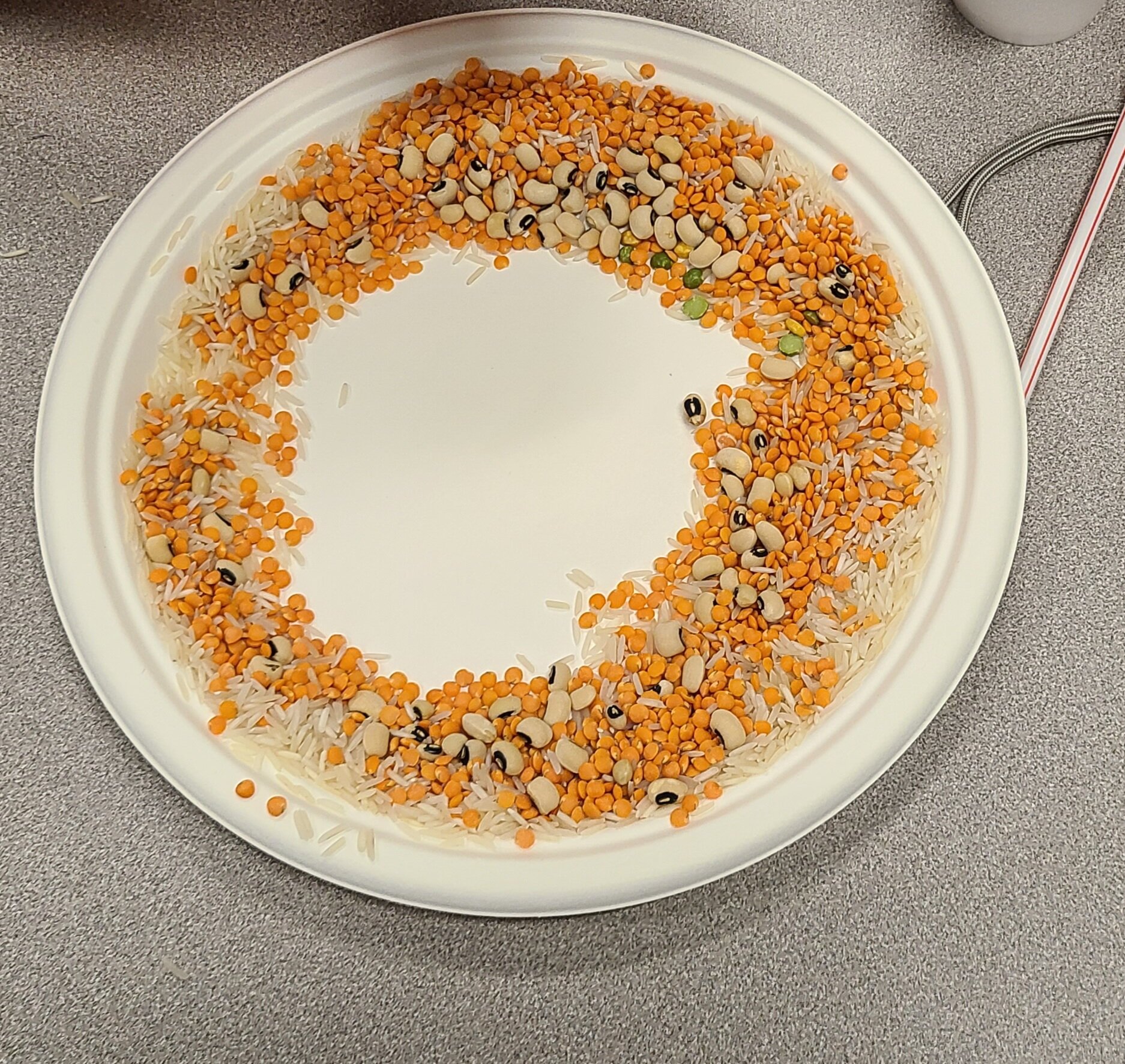Breathe, Feel Imagine and Create
Meidtative Rice Mandala Art
In this class, we learned how to create rice mandalas incorporating mindful breathing. The teacher example that was created had to be done in a way that the rice that was being used to create these mandalas would be just enough to where the students could easily use their straws to blow over to create radially symmetrical designs. After measuring the right consistency, all the materials were prepared in advance to have a smooth class. As usual, we started our class by drawing our feelings and sharing those stories as the students focused on the studio habit of expressing themselves. One of the students created his version of a mandala and said,
“I am creating a peaceful design and this helps me stay calm.”
This was an encouragement because he was getting the idea of how he could draw and be in a peaceful state of mind. Another student created a figure with a halo on the head and explained, “This is one of the gods and their name is Holy Mary and she makes me feel calm.”
It was interesting to see who or what makes the students feel calm.
We did another assessment where three different designs were shown, and students were asked which one was not a mandala. I asked students to raise their hand if they knew the answers. A few students responded. Looking back and after getting feedback I realized that it would have been better to have planned this assessment better where I could have numbered the three drawings and asked the entire class if image 1, image 2 or image 3 out of them which one was not a mandala. And have them all participate in the assessment by everyone picking number one two or three. This gives me thoughts for the future to create assessments where everyone can participate.
After reviewing the breathing exercise, I shared with them about Kolam and Rangoli rice art from southern India and how for years, I have seen women in my community offering their prayers in the morning and then creating these ephemeral mandalas with rice flour every single day. We reviewed how breath control is used in Chinese calligraphy and did a brief assessment of what the students remembered from the previous class on radial symmetry as we went outside to take pictures of radially symmetrical objects.
One of the students from kindergarten said, “Tires.”
He is too young to say hubcaps or tires hubcaps are radially symmetrical but it was encouraging to see that he is understanding and retaining knowledge related to art concepts.
After him, the other ones talked about spiders, flowers, and gutter caps being radially symmetrical. This makes me think about the importance of helping students understand our terminology and concepts but in a more creative and fun way compared to giving a lecture for the future.
Artist examples of Wolfgang Laib spending close to 30 years collecting pollen and creating his artwork pollen were interconnected to the virtue of patience that we could all practice as we created the rice mandalas. Students were asked if they could guess how many years he spent collecting pollen and the answers helped me understand how different students think differently and how some I did not understand the concept of days, months, and years. All these little experiences if observed carefully will help me become a better educator. After showing the teacher examples and explaining how students could use pair share and document their work they started creating their ephemeral rice mandalas. As students received all the materials they immediately got engaged in the process of creation. They stayed engaged during the entire class as they could keep creating as many mandalas as they wanted, and it seemed like the material that they were creating the work with helped them stay engaged as it was not messy created an amazing sound, and was fun to work with. One of the students created OK :) while another created a radius radially symmetrical piece and yet another one created a horse. All three of them answered when I asked them about radial symmetry. Was my instruction not very clear or is it OK to allow that freedom of play as we teach our art lessons?
This lesson reminded me of what Van Gogh once said, “Great things are not done by impulse but by a series of small things brought together.” He was talking about the incremental nature of the artistic process and the significance of patiently layering each stroke color and idea to create something beautiful. This made me think of patience not just as a virtue but as a method and deliberate approach to creating amazing artwork. I hope to look at different virtues in life in the context of the practice of art-making in the future.












